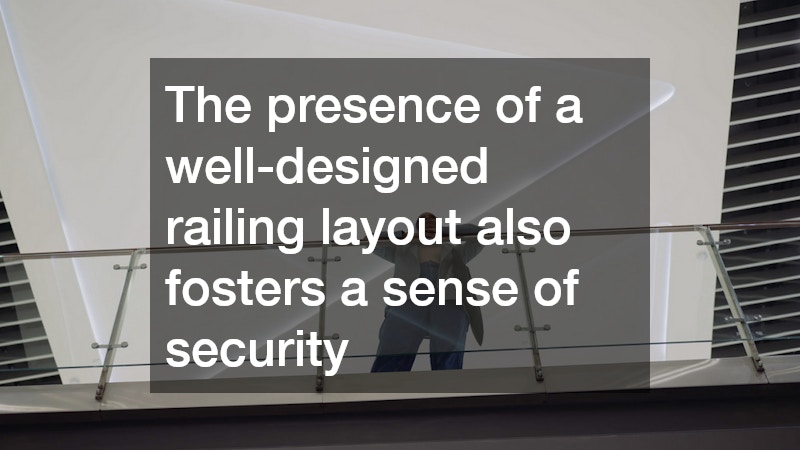
There are multiple critical reasons for ensuring that a building’s railing layout adheres to established codes. Understanding these regulations not only guarantees safety but also enhances aesthetics and property value.
What Are the Key Code Requirements for Railing Layouts?
Every jurisdiction has specific regulations that dictate proper railing layout. These regulations typically cover essential aspects such as height, which must usually be a minimum of 36 inches, and spacing, which determines how far apart balusters must be to prevent a child from slipping through.
Moreover, the materials used in constructing railings must also meet certain safety standards to ensure stability and durability.
In addition to height and spacing, structural requirements play a crucial role in the overall safety of a railing layout. For example, the strength of the railing must adequately support a certain amount of force, which is often specified by code. This is particularly important in areas prone to strong winds or where railings are subjected to significant wear and tear due to heavy foot traffic.
Lastly, understanding the local amendments and national standards, such as those set by the International Building Code (IBC) and the American National Standards Institute (ANSI), is critical. Different properties may have unique needs based on their environment and usage, making it essential for property owners and developers to engage with updated codes regularly.
Why Is a Proper Railing Layout Essential for Safety?
An up-to-code railing layout is primarily a safety measure aimed at preventing accidents and injuries. Statistics indicate that falls are one of the leading causes of injuries in both residential and commercial spaces, emphasizing the necessity for reliable railings. When railings are inadequately designed or constructed, they can lead to devastating outcomes, including severe injuries and even fatalities.
The presence of a well-designed railing layout also fosters a sense of security among occupants and visitors. People are more likely to feel safe in a building that adheres to safety codes, knowing that there are protective measures in place. This heightened awareness can encourage more foot traffic and increase the overall functionality of a space.
Furthermore, ensuring that railings meet safety standards protects property owners from potential liabilities arising from accidents. Non-compliance can lead to costly lawsuits, insurance claims, and reputational damage, making it paramount to prioritize safety through proper railing design.
How Can Non-Compliance with Railing Codes Affect Property Value?
The impact of railing layout compliance extends beyond immediate safety concerns; it significantly influences property marketability and value. Properties that fail to comply with building codes may face difficulties during the sale process, with potential buyers often wary of hidden structural issues. Consequently, a non-compliance issue can considerably reduce buyer interest, thereby lowering property value.
Additionally, non-compliance often incurs fines or mandates for retrofitting, which can further diminish a property’s appeal to prospective investors. Buyers tend to shy away from properties needing costly renovations or upgrades, especially when it comes to safety features like railings. This scenario emphasizes the need for up-to-code designs that not only meet safety requirements but also make properties more attractive.
Moreover, outdated or improperly installed railing layouts can lead to safety inspections failing, creating additional hurdles for property owners. This scenario can result in increased pressure to resolve compliance issues swiftly, often at great expense. Understanding the ramifications of non-compliance underscores the value of maintaining an up-to-code railing layout.
What Common Mistakes Are Made in Railing Layout Design?
Errors in railing layout design are more common than one might assume, and they can lead to serious safety breaches. One frequent mistake includes using inappropriate materials that do not meet necessary safety standards, which compromises the structural integrity of railings. Property owners must be vigilant when selecting materials to ensure compliance with regulations.
Another prevalent issue is the miscalculation of railing height and baluster spacing. These mistakes can result in gaps that are too wide or railings that are too short, both of which significantly increase the risk of accidents. Such errors not only jeopardize safety but also lead to potential legal repercussions for property owners.
Lastly, a lack of attention to detail in design plans can manifest in poorly positioned anchors and supports. If the structural elements of a railing layout are not properly integrated, the entire setup can fail. It’s vital for designers and contractors to meticulously review plans to avoid these common pitfalls, thereby ensuring a safe and compliant final product.
How Can Property Owners Ensure Their Railing Layouts Meet Code?
To validate that their railing layouts meet current code requirements, property owners should start by consulting local building codes. Familiarizing themselves with these documents will give them a better understanding of what is expected. Additionally, reaching out to local building departments can provide clarity on specifics that may vary by jurisdiction.
Engaging professional services is another beneficial strategy for property owners. Architects and contractors with experience in local building codes can provide insights and assistance in adhering to regulations. Having professionals involved not only ensures compliance but also enhances the overall design of the railing layout.
Furthermore, scheduling regular inspections can help identify potential compliance issues before they escalate. Building inspectors can provide valuable feedback and guidance on necessary adjustments, allowing property owners to maintain a safe environment. This proactive approach to compliance generally proves beneficial in the long run.
Reiterating the importance of having a building’s railing layout up to code emphasizes safety, compliance, and property value as key considerations. Ensuring that railings meet established codes protects occupants while enhancing the overall appeal of properties. Making informed choices about railing design not only contributes to safety but also preserves and potentially increases property value over time.


